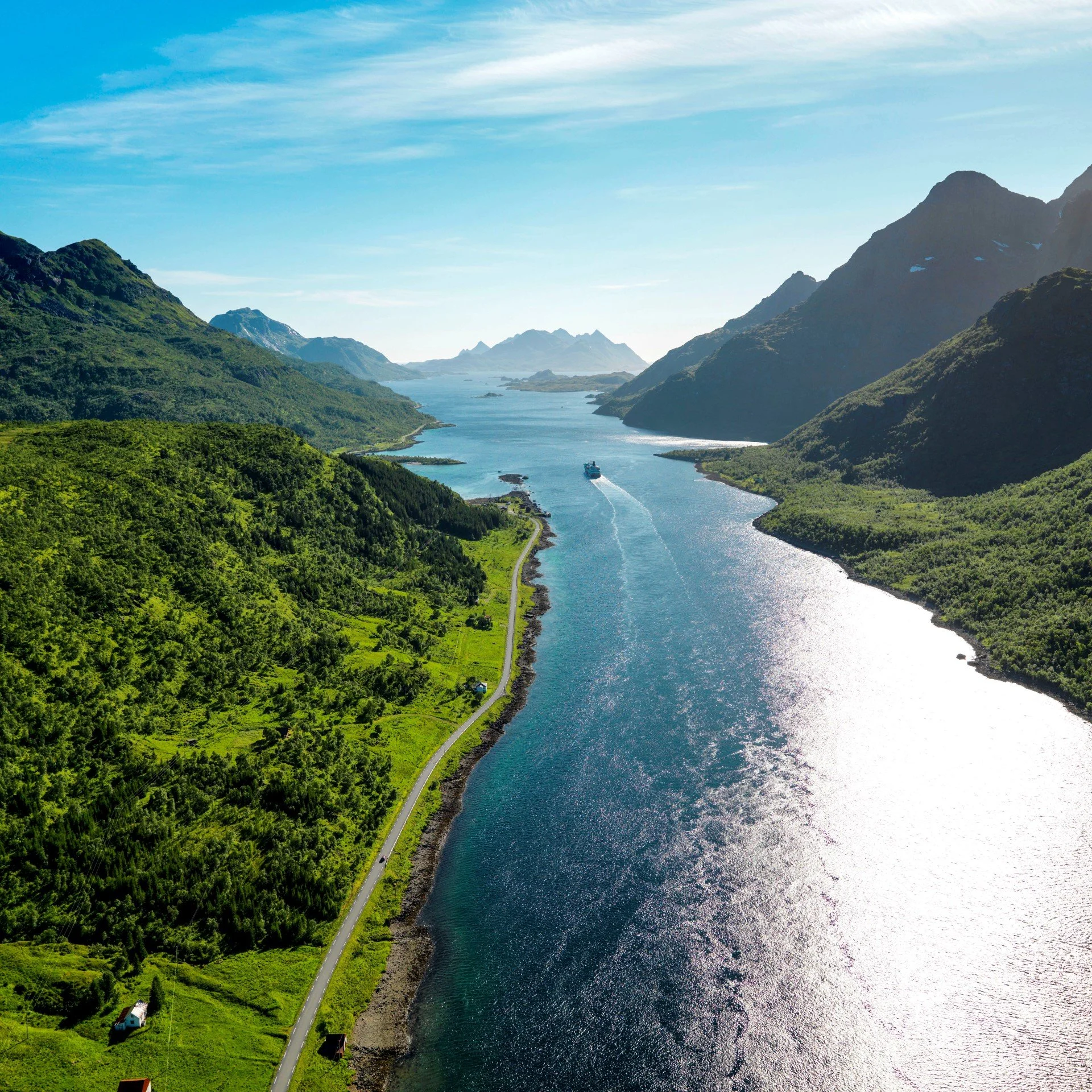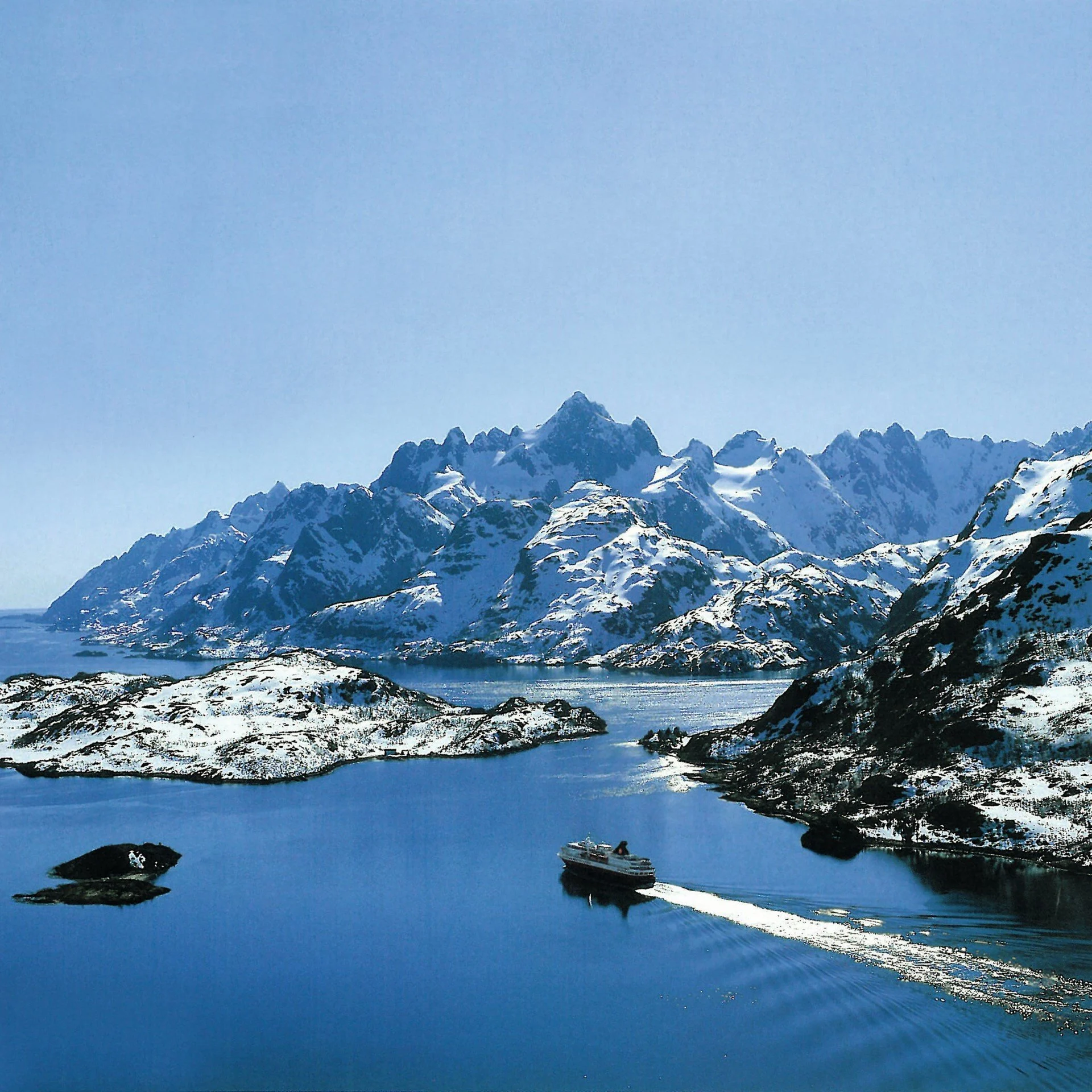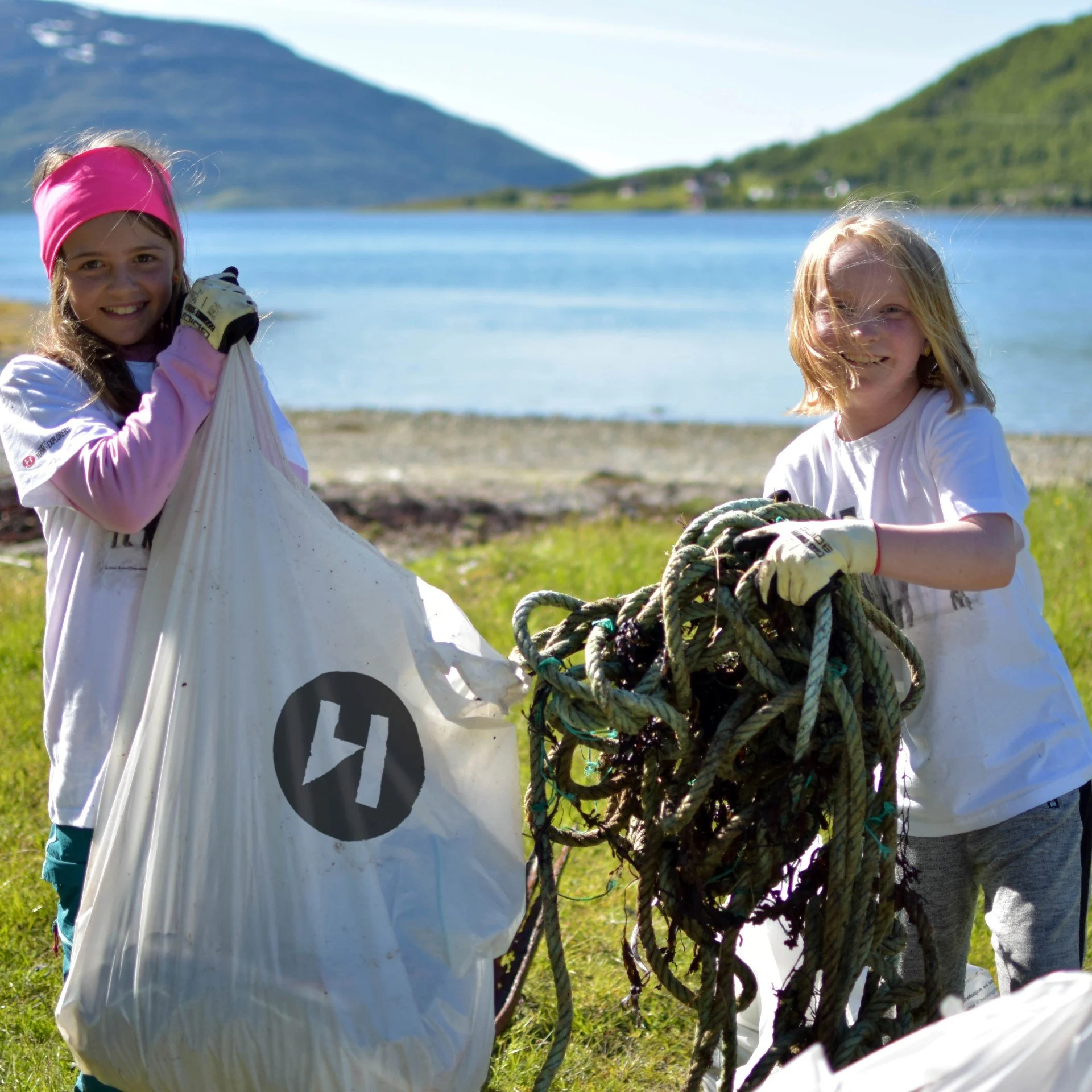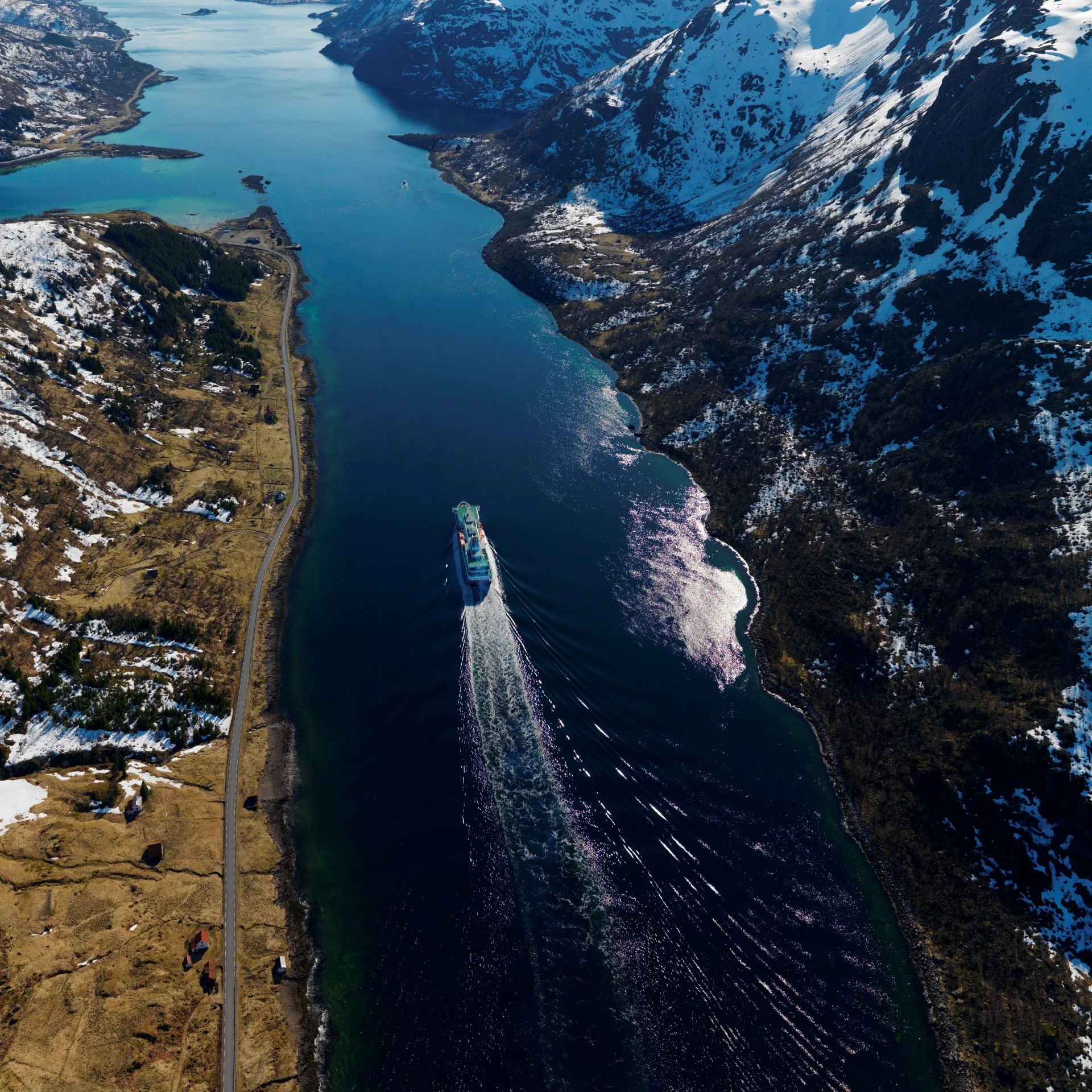
Caring for the Coast – Nature
A deep love for Norway’s coast compels us to take care of its pristine waters and shores in the most sustainable ways possible.
As the Original Norwegian Coastal Express, we are grateful for how the Norwegian coastline has cared for us all these years. It has sheltered us with its mountains and nourished us with the bounty of its waters. We’ve landed on its beaches, sailed its fjords, and hiked its islands. Nature here is beautiful, generous, but also fragile. We owe it to protect it as best we can.
Here are some of the ways we’re striving to offer you not just “the world’s most beautiful voyage”, but one of the greenest and most sustainable too.
Better by sea
Our commitment to caring for nature on the coast is at the core of who we are. Each year, our ships are busy transporting 80,000 freight orders a distance of 2,680 nautical miles, equivalent to almost 3,100 regular miles. It’s an amount and a distance that would require 10,000 trailer trucks to match – but fewer trucks on the road means a lot less gas guzzled and emissions released.

Carbon cutbacks
We go far beyond mere words to offer you not just “the world’s most beautiful voyage”, but one of the greenest and most sustainable too. Together with regular maintenance and checks by engineers, close to 30 different energy-saving measures are active across our fleet.
This could include state-of-the-art hybrid engines that employ advanced batteries to power the ship with low-emission electric energy. Or specialized aquadynamic propellers that cut cleanly through the water, reducing drag and minimizing fuel. Or an intricate network of heat-efficient exchange systems that permeate the ship.
For fuel, our ships use SDM (Special Distillate Marine), which has more than 30 times lower Sulphur emissions, less NOx, and less soot than heavy oil. Most of our ships have also been adapted to plug into shore power whenever in certain ports.
These innovations and initiatives all add up, enabling us to slash some 18,000 tons of CO2 and 500 tons of NOx per year.

Taking out the (plastic) trash
At the current rate, by 2050, there will be more plastic waste than fish in the sea. We must take action. In 2018, we banned all unnecessary single-use plastic – the first cruise line to do so. Instead of plastic straws, bottles, cups, and bags, you’ll find environmentally friendly alternatives made of biodegradable paper.
We may invite you to have a part too, joining local volunteers in a communal beach clean-up to collect and dispose of washed-up plastic and any other marine litter we come across.
Good, green food
The majority of the ingredients we use for our onboard cuisine are received by our ships at half of the ports we visit – with as few food miles in between as possible. Not only does this provide farming and fishing families with important income, but it also cuts down on the energy needed to transport or refrigerate ingredients.
We insist our seafood suppliers adhere to sustainable practices and our full range of plant-based menus are a healthy option for both you and for the planet.
As you tuck into a sumptuous dessert that features berries that were hand-delivered straight from the local forager to our onboard chefs, you’ll likely feel more connected to the life and the landscapes here. Savoring each dish, you’ll appreciate that sustainability doesn’t just do good – it tastes good too.
Connecting the dots
Caring for nature on our coast means understanding it. We’ve had a long history of engaging with scientific research at home and abroad.
Since 1935, our ships have taken water-temperature readings at 22 points along the Norwegian coast for the Institute of Marine Research, one of the longest-running set of measurements in the world. The valuable environmental data we provide helps specialists see what’s happening on our coast and, by extension, the planet as a whole.
